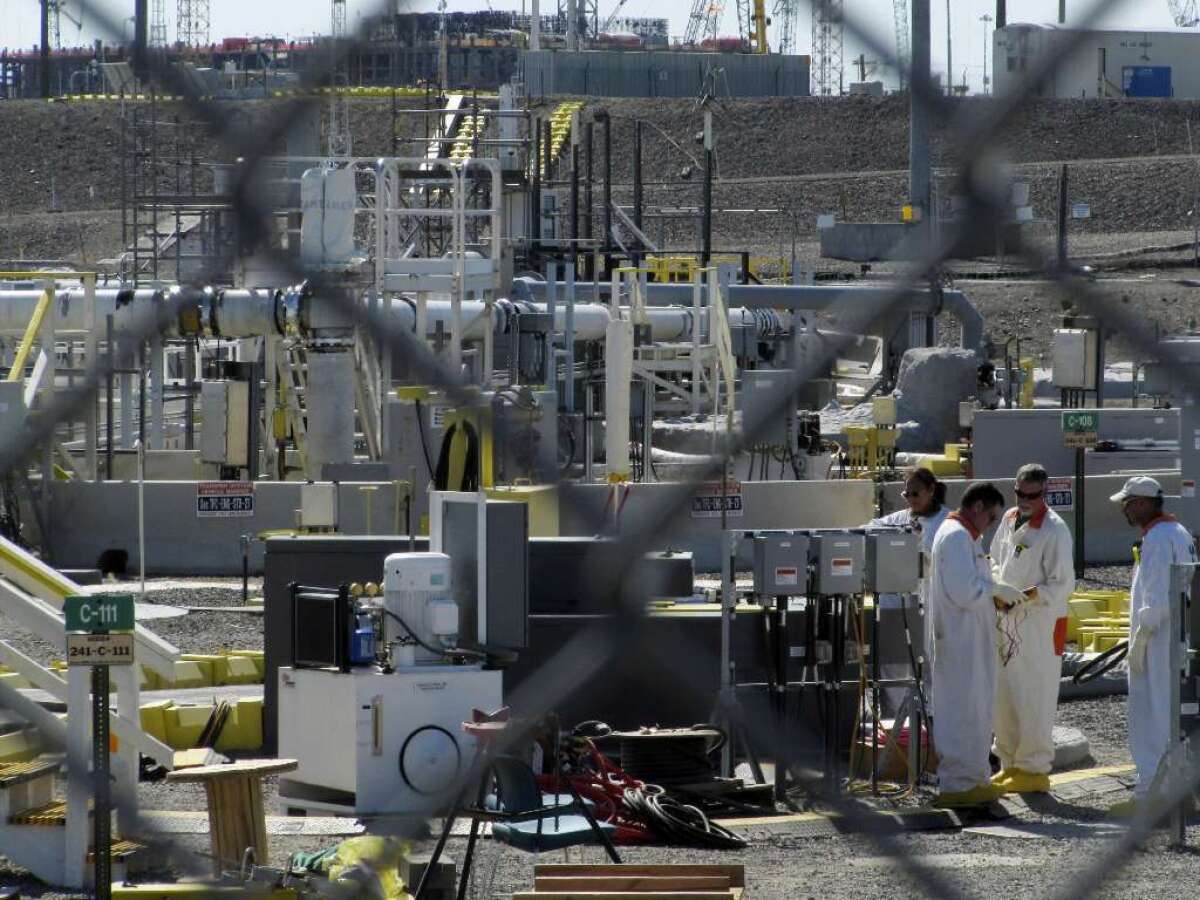New radioactive waste leak found in tank at Hanford nuclear site

- Share via
SEATTLE — An aging tank of high-level radioactive waste is leaking at the Hanford nuclear site in south-central Washington state at the rate of up to 300 gallons a year, federal authorities disclosed Friday after discovering a dip in the volume of toxic sludge in the tank.
Though more than a third of the 149 old single-shell tanks at the site are suspected to have leaked up to 1 million gallons of nuclear waste over the years, this is the first confirmed leak since federal authorities completed a so-called stabilization program in 2005 that was supposed to have removed most liquids from the vulnerable single-shell tanks.
The new leak calls into question the effectiveness of that program, and state officials said it increased the urgency of ending roadblocks to a permanent storage solution for the 53 million gallons of waste housed at the sprawling site that was a center for atomic bomb-making material after World War II.
“This is very disturbing news. I am alarmed about this on many levels,” Gov. Jay Inslee said at a news conference after he was contacted about the leak Friday morning by U.S. Energy Secretary Steven Chu.
“This raises concerns not only about the existing leak that has been recently discovered, but also concerning the integrity of the other single-shell tanks of this age, some of which have experienced prior leaks,” he said.
Lori Gamache, a spokeswoman for the Department of Energy at Hanford, said the tank had most of its liquids removed during “interim stabilization” in 1995 and was left with 447,000 gallons of sludge.
Data trends showed a decrease in the volume of the tank, and when the accuracy of the measuring instrument was verified, it became apparent that a leak had occurred into the surrounding soil, she said. The estimated volume is 150 to 300 gallons a year.
Officials say they can’t be sure exactly how much has leaked because there is evidence of “water intrusion” into the tank — meaning a bigger leak could have occurred while the volume in the tank remained fairly constant.
State officials say there is no immediate public health threat, because it could take years or even decades for the leaked material to reach the groundwater and move on to the nearby Columbia River.
But Inslee said the timing of the leak’s discovery coincided unfortunately with a report this week from Democrats on the House Appropriations Committee that more than 1,000 federal employees now working on cleanup at the site could be placed on unpaid leave for six weeks if threatened federal budget “sequestration” cuts occurred on March 1.
“I know this is a time of tight budgets, but with an active leak of high-level radioactive material into the environment, money cannot be allowed to be an excuse for inaction, and the proposed sequestration that we are facing could not have come at a worse time,” Inslee said.
The Department of Energy still is trying to understand a leak discovered in August at one of the more modern, double-shell tanks built as updated, temporary storage for waste removed from the old single-shell tanks.
Gamache said the waste in that case did not escape the outer shell of the tank. “We continue to monitor it,” she said.
kim.murphy@latimes.com
ALSO:
Destructive rabbits invade Denver airport
Carnival Triumph was a ‘tale of two ships,’ passenger says
Russia meteor prompts U.S. lawmakers to call for protective steps
More to Read
Sign up for Essential California
The most important California stories and recommendations in your inbox every morning.
You may occasionally receive promotional content from the Los Angeles Times.










